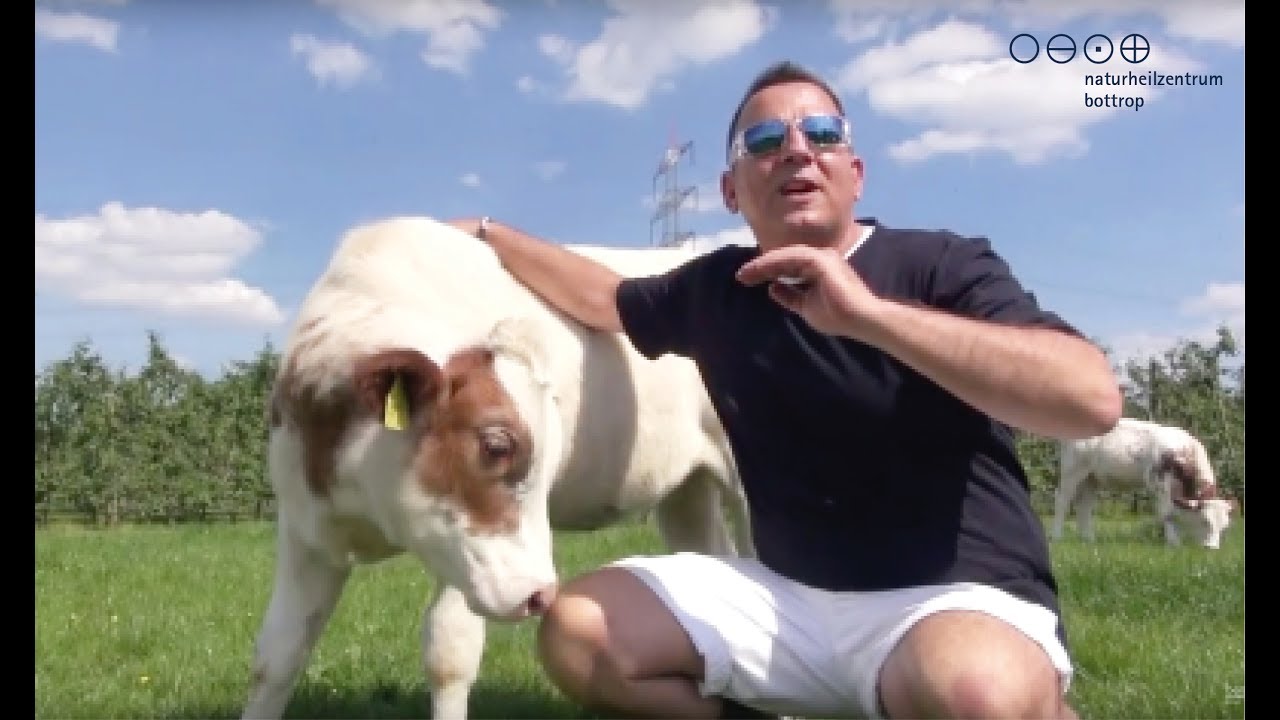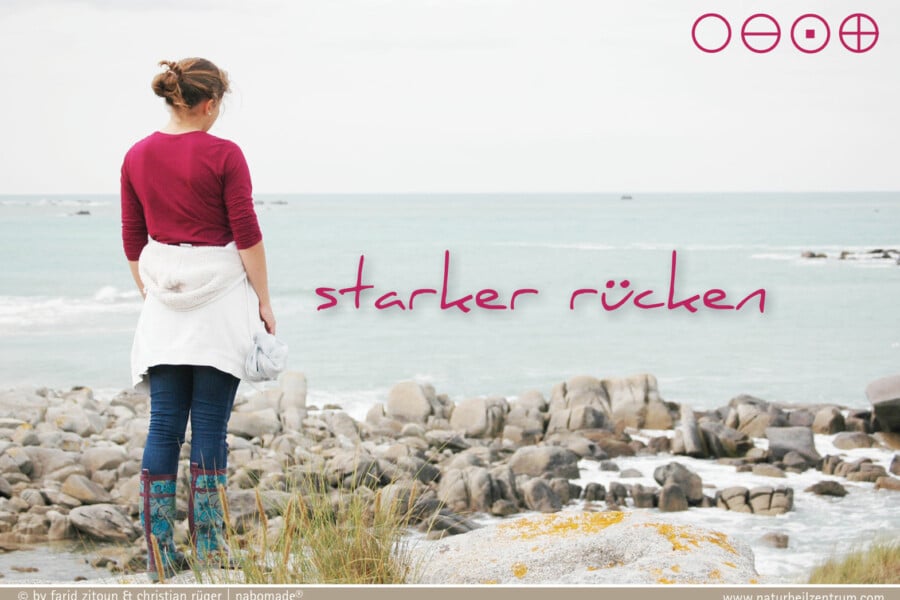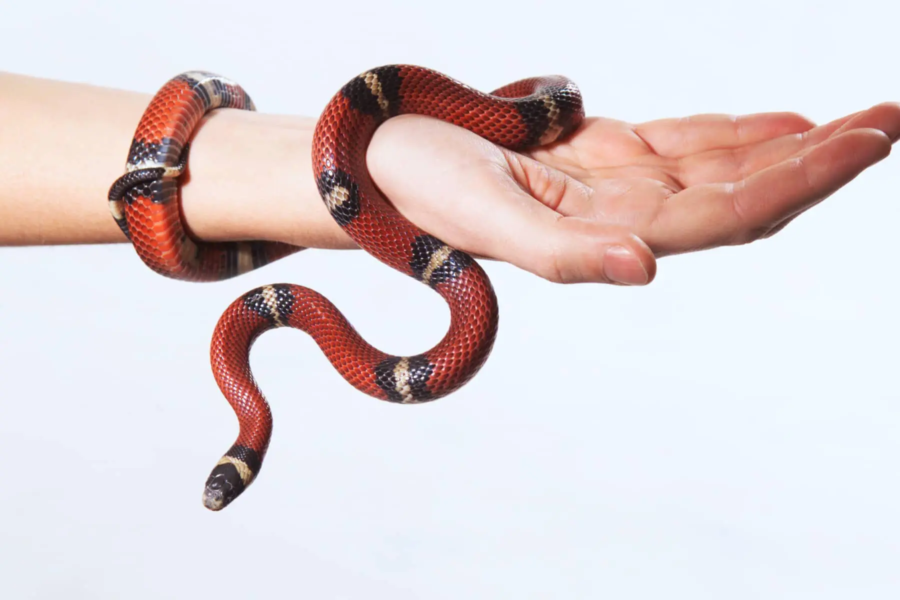Current health care: cow cuddling – 600 kilos of pure calm and serenity
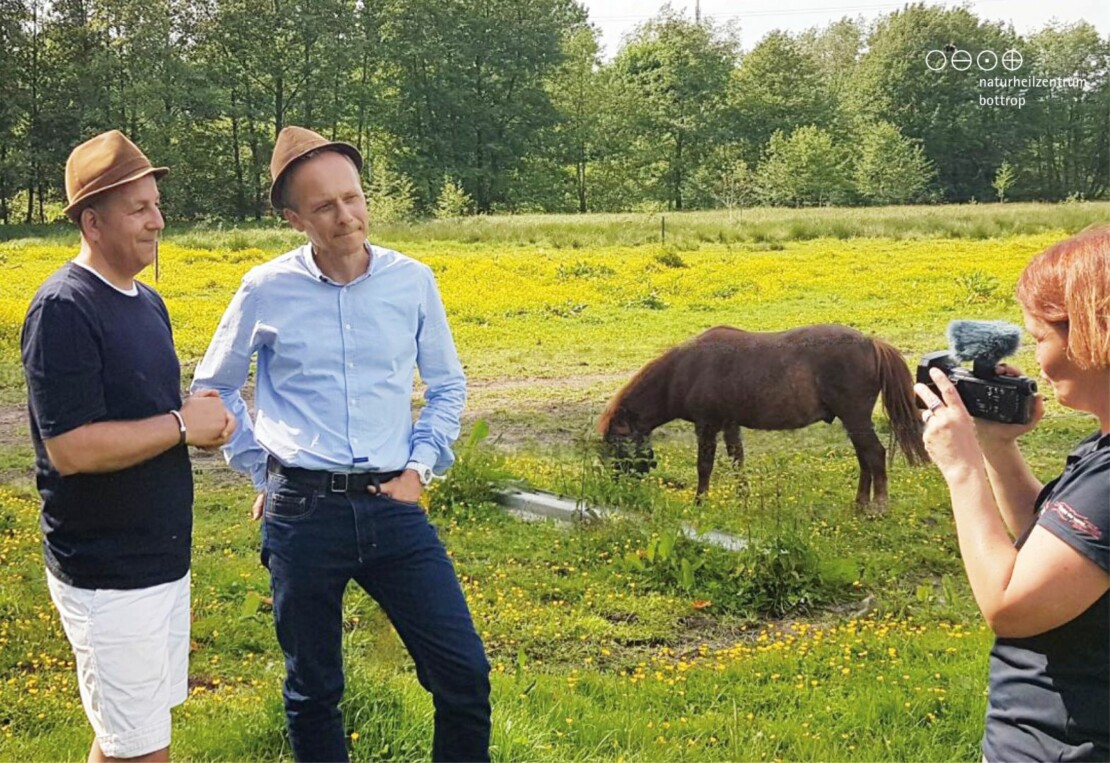
Naturheilzentrum Bottrop has conducted the ultimate feelgood test
Snuggle factor XXL for cow cuddling plus a lot of touching moments for Humans and animals. Monja and Lotta look at the visitors with their big brown eyes. The two country dwellers are from a very small breed of cow, measuring barely 1.30 meters to their withers, and they emanate unbelievable serenity. The ladies stand for tranquility itself. They benignly observe events, turning their big heads towards the People with interest. Stroking is expressly permitted and desired. Because on this Saturday afternoon, we are off to Sagel Farm in Bottrop Kirchhellen for some cuddling. Cow cuddling, to be more precise.
Small fan base – but cow cuddling is enjoying increasing popularity
Cow cuddling was invented in the Dutch municipality of Voorst. On the farm belonging to Marente Hupkes-Boumann and her husband Jaap Hupkes. For 15 years now, ‘koeknuffelen’ has been on offer there (www.koeknuffelen.nl). It is important to the discoverers of one of our new feelgood trends that cows are far more than just livestock. Cows are incredibly lovable animals, according to the credo of the Hupkes. More and more farms in Germany also invite cow cuddling now. Bodily contact with these gentle ruminants has also found ever more adherents among us.
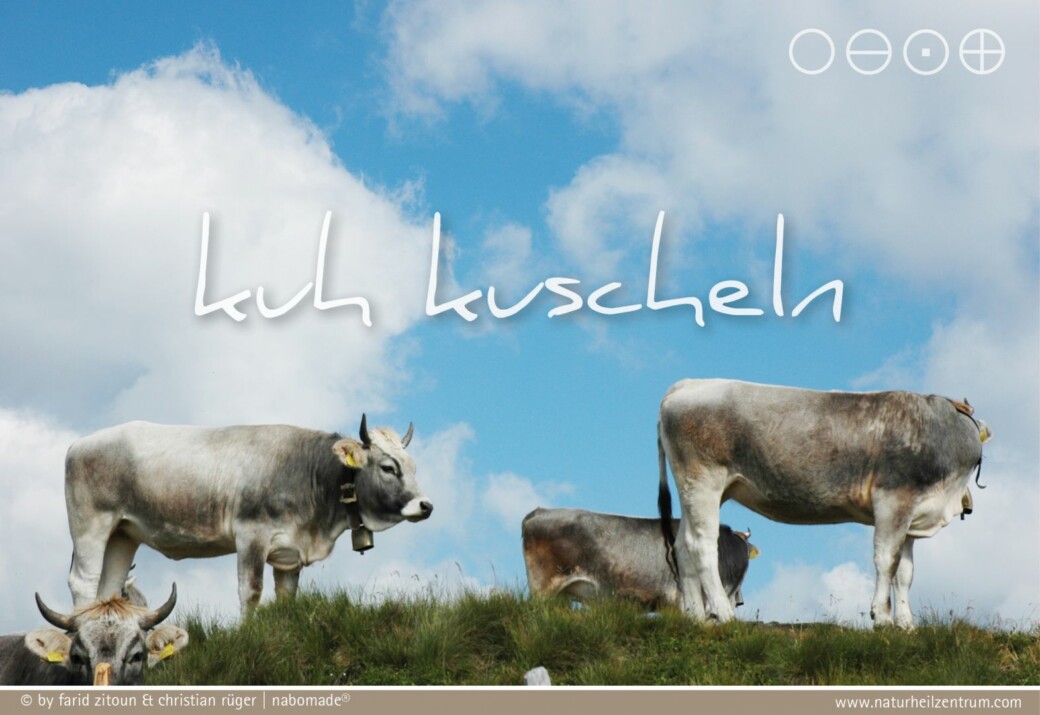
Cow language – new territory for so many city dwellers
But before the fingers of the seminar participants are allowed to sink into the soft fur of the four-legged brown-and-white creatures, there is a theoretical introduction to the topic of cows in general, and on cow behavior in particular by the farmer Burkhard Sagel. Information about the different breeds of cow and knowledge of the requirements in terms of maintenance and care await the participants. However, first and foremost, the participants should understand the animals’ body language. This is very important to know before touching the imposing ruminants because it really is unchartered territory for so many city dwellers. The prospective cow cuddler will learn that it is a good sign when the ears of the four-legged creature are lying flat against the neck. “If the ears point forward”, reveals the farm owner, then the cow is on the alert. Mutual consent and the willingness to get involved are the most important things in cow cuddling. The well-being of the animal is always at the forefront. Monja and Lotta are the determiners. They decide how the type of contact will be. If the cow does not feel like cuddling, the visitors will soon know about it, as the cow will clearly demonstrate her unwillingness to the Person. But this is rarely the case. In most cases, curiosity wins over as it ranks among the most pronounced characteristics of these four-legged creatures.
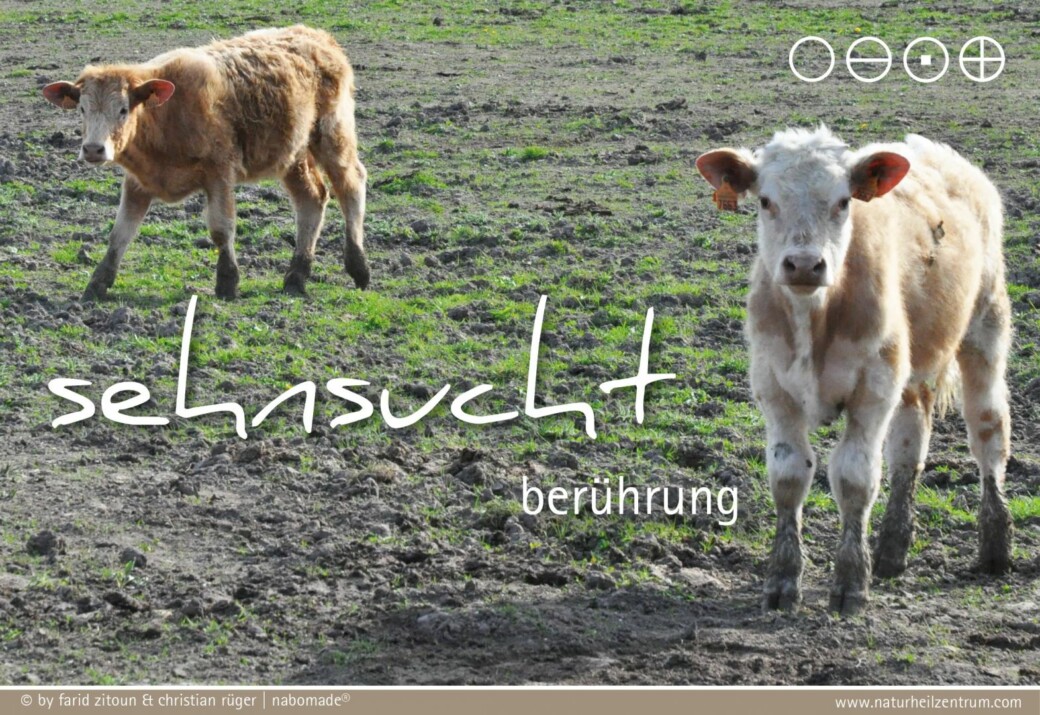
Loud talking is taboo when cuddling
Cow cuddling works step by step. Slowly and quietly. Loud talking is taboo because you would not want to scare the animals. It takes time, explains Farmer Sagel’s partner, the diploma-qualified economist, Patricia Nolting, before the guests dare to approach the cow and cuddle their imposing bodies. It can be done when standing up and also while lying down in the case of People who are handicapped. Through grooming, Humans and animals will get to know each other and start to establish a trust-based relationship. This is important because actual cuddling, body warmth, proximity and serenity can only really be felt and exchanged in cases of mutual trust. Only then can the special effect of cow cuddling set in. The farmers also know from experience what the proximity to the good-natured ruminants triggers off in Humans. “It is a very special kind of relaxation; stress relief, which can be directly felt.”
The fact that direct contact with animals is good for People has now been documented by numerous studies. The possibilities of animal-assisted therapy are used therapeutically. This includes pedagogical, psychological and socially-inclusive services with animals. These are aimed at children, adolescents or adults with cognitive, motor or social-emotional limitations or behavioral disorders. The clients interact with and communicate via the animals. The aim of the therapy can be the restoration or the maintenance of physical, cognitive, and emotional functions. The subjective well-being of the patients should be improved, and their respective living situations should be supported. That’s the theory. In practice, it has been shown that this calculation can work out.
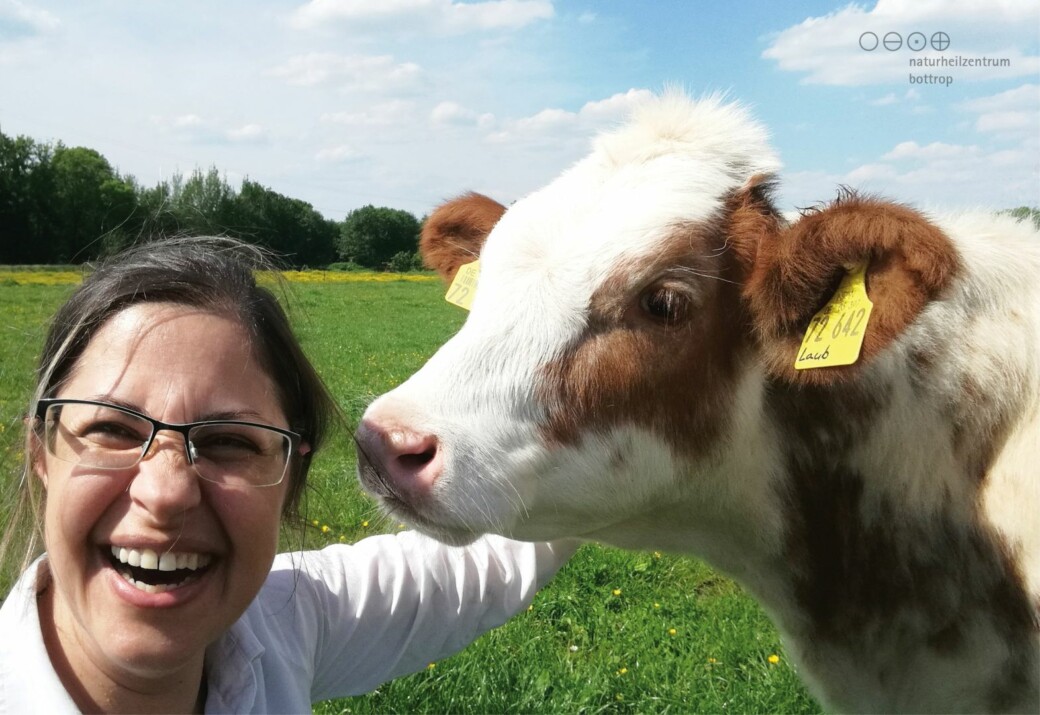
Alzheimer’s and dementia – animals can open doors
Animals open doors, they help us to slow down, and intense contact with them does us good. Various positive health aspects have been documented, such as the beneficial effect on our cardiovascular system. Animals can also build bridges for People with dementia. Four-footed therapists are regularly on duty in many nursing homes, hospitals, and handicap facilities. A large-scale interdisciplinary study by TU Dresden has investigated the influence of animals on the well-being of People with dementia over the period of two and a half years. The participants in the study consisted of residents from two nursing homes. The results, which have been produced by scientists under the guidance of Prof. Vjera Holthoff (University Hospital Carl Gustav Carus) and Prof. Frank Nestmann (TU Dresden, Faculty of Education), document that animals also connect with People who have little or no involvement in interPersonal communication any more as a result of their illness. These People led withdrawn and isolated lives, as a rule. The contact e.g. with therapy dogs produced changes in their behavior. They not only reacted positively to visits by the trained four-footed friends, they also immediately initiated direct contact with the animal of their own volition.
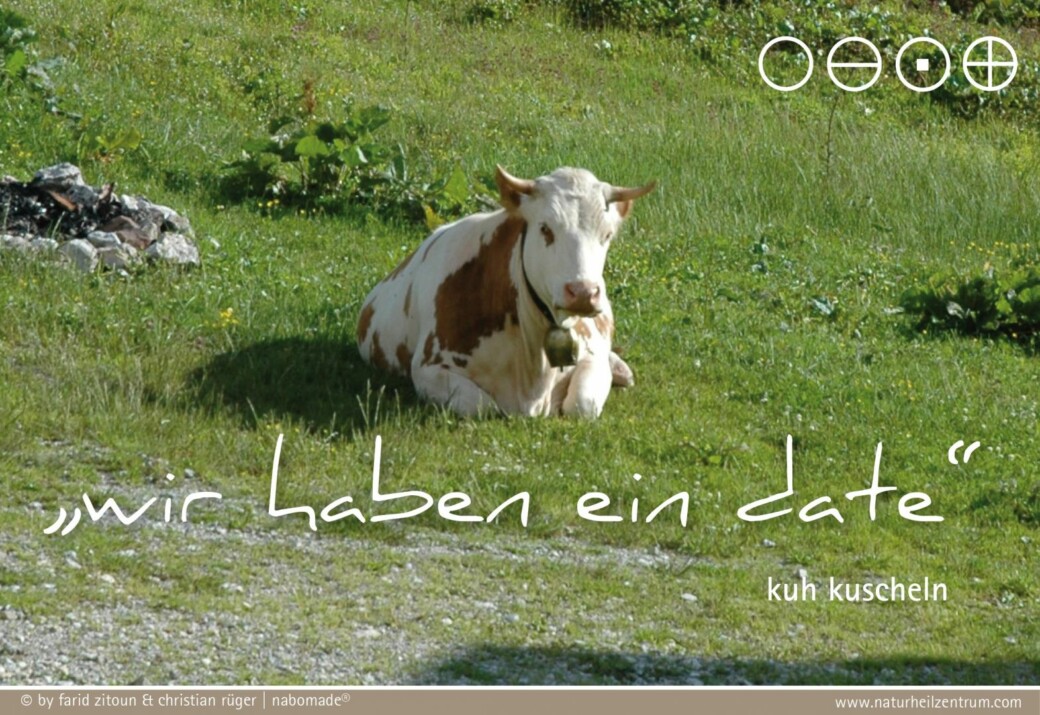
Feelgood hormone helps to relieve stress
From their many years of practical experience, the naturopaths Farid Zitoun and Christian Rüger from Naturheilzentrum Bottrop know about the potential and the associated possibilities of animal-supported therapy. “The oxytocin hormone is released when you stroke an animal,” says Christian Rüger. Oxytocin is a feelgood hormone. “It reduces stress hormones such as adrenaline or cortisol,” adds Christian Rüger. The result: you relax, which is, of course, beneficial for your health. And contact with a four-footed friend can also be good for your own immune system. Even the mind benefits from cuddling and stroking. Anxiety, depressive moods and aggression can be reduced.
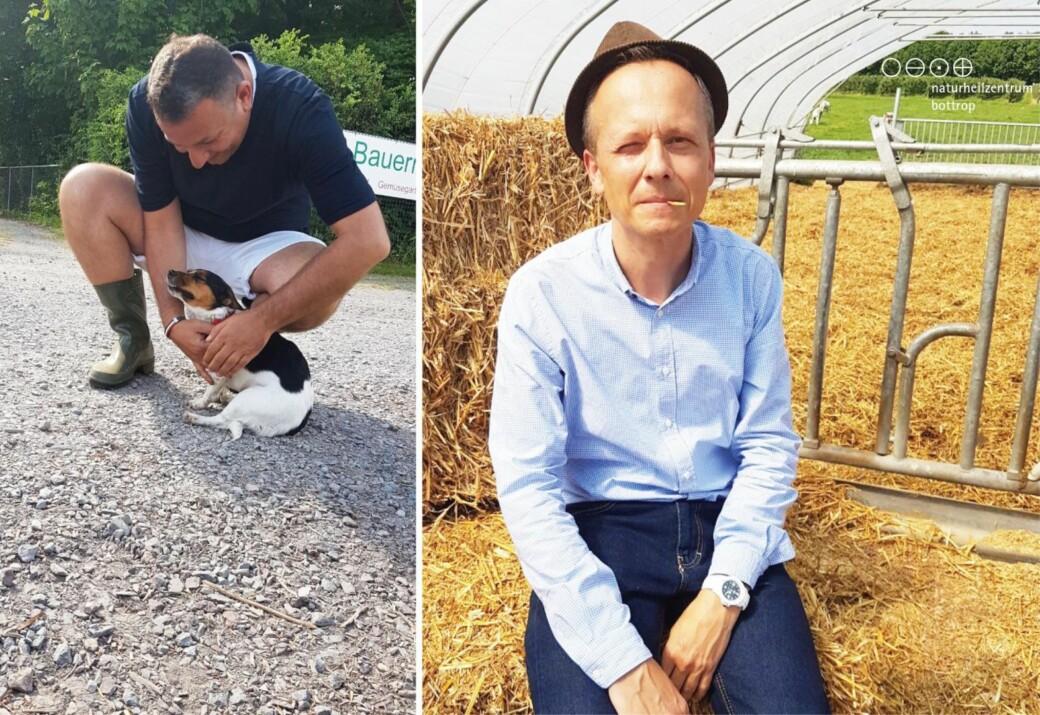
The reason why cows are especially suited to cuddling is due to their very nature. The basic tempo of ruminants, which weigh up to 600 kilograms, is significantly slower than that of Humans. If you’ve ever lain in hay, felt the warmth of the animal beside you, and listened to the sounds of the gentle ruminants with your eyes closed, you’ll quickly and happily want to repeat the experience. “Cow cuddling does not replace therapy,” says Farid Zitoun from the Naturheilzentrum Bottrop. But the intense contact to the gentle four-legged creatures relaxes managers as well as children, animal lovers, and those who approach these impressive animals with clear respect. Stress relief in a whole new way, which is healthy.
“Natural and with a big fun factor”, is the conclusion of the complementary-medicine practitioners. Those who want to go on a cuddling course with a black-brown, country-dwelling or Holstein cow, will find providers in their vicinity under the keywords ‘cow cuddling’. Further tips, videos & news on current health topics, lifestyle to go and more can be found on the official Naturheilzentrum Bottrop YouTube channel, which features the bloggers Farid Zitoun & Christian Rüger from Bottrop’s naturopathic practice.

